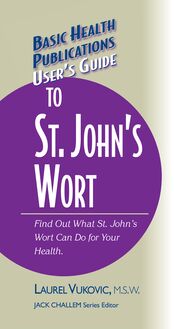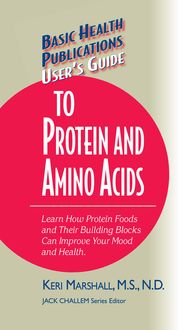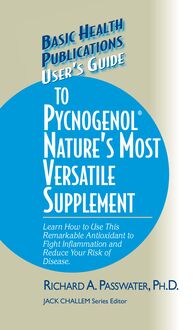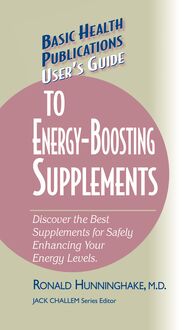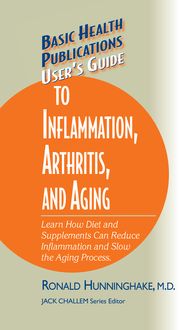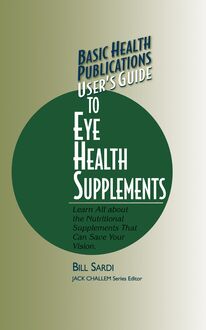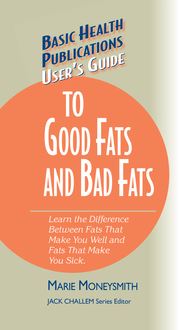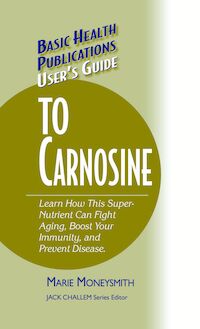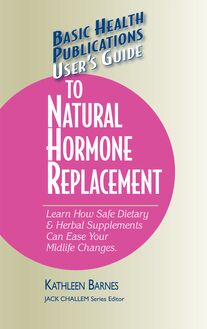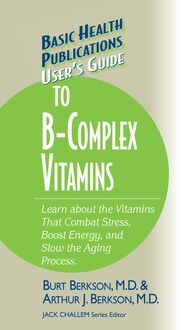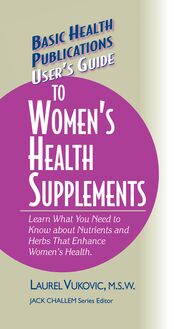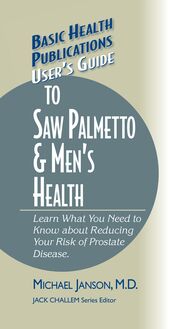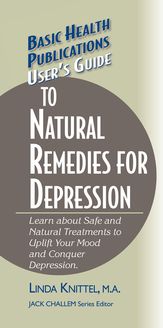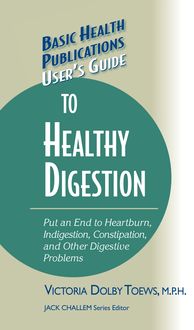User's Guide to Good Fats and Bad Fats , livre ebook
41
pages
English
Ebooks
2003
Vous pourrez modifier la taille du texte de cet ouvrage
Obtenez un accès à la bibliothèque pour le consulter en ligne En savoir plus
Découvre YouScribe en t'inscrivant gratuitement
Découvre YouScribe en t'inscrivant gratuitement
41
pages
English
Ebooks
2003
Vous pourrez modifier la taille du texte de cet ouvrage
Obtenez un accès à la bibliothèque pour le consulter en ligne En savoir plus
Publié par
Date de parution
01 mai 2003
Nombre de lectures
1
EAN13
9781591206545
Langue
English
Poids de l'ouvrage
1 Mo
Publié par
Date de parution
01 mai 2003
Nombre de lectures
1
EAN13
9781591206545
Langue
English
Poids de l'ouvrage
1 Mo
The information contained in this book is based upon the research and personal and professional experiences of the author. It is not intended as a substitute for consulting with your physician or other healthcare provider. Any attempt to diagnose and treat an illness should be done under the direction of a healthcare professional.
The publisher does not advocate the use of any particular healthcare protocol but believes the information in this book should be available to the public. The publisher and author are not responsible for any adverse effects or consequences resulting from the use of the suggestions, preparations, or procedures discussed in this book. Should the reader have any questions concerning the appropriateness of any procedures or preparations mentioned, the author and the publisher strongly suggest consulting a professional healthcare advisor.
Series Editor: Jack Challem Editor: Rowan Jacobson Typesetter: Gary A. Rosenberg Series Cover Designer: Mike Stromberg
Basic Health Publications, Inc.
8200 Boulevard East North Bergen, NJ 07047 1-800-575-8890
Copyright © 2003 by Marie Moneysmith
ISBN 13: 978-1-5912-065-4-5
ISBN: 1-59120-052-0
All rights reserved. No part of this publication may be reproduced, stored in a retrieval system, or transmitted, in any form or by any means, electronic, mechanical, photocopying, recording, or otherwise, without the prior written consent of the copyright owner.
Printed in the United States of America
10 9 8 7 6 5 4 3 2 1
C ONTENTS
Introduction
1. Fats: The Good, the Bad, and the Healthy
2. Omega-3 Fatty Acids
3. Balancing Act: Omega-6 Fatty Acids
4. Other Good Fats
5. Unsung Heroes: Lesser-Known Good Fats
6. Fats to Avoid
7. Good Fats and Pets
8. Selecting Good Fats and Supplements
Conclusion
Selected References
Other Books and Resources
I NTRODUCTION
I f you’re confused about fat, you’ve come to the right place. In recent years, experts have taken us from an “all fat is bad” position to the more realistic “some fats are good” stance of today. The problem is that the transition left a lot of confusion in its wake. How can olive oil be healthier than vegetable oil when they seem so much alike? Which is healthier—margarine or butter? What makes one fat good and another bad? How can anyone without an advanced degree in chemistry make sense of it all?
The truth is, sorting out the good fats from the bad is easier than it might seem. And yes, it is worth the effort. Scientists are discovering that getting enough of the good fats—and cutting back on the not-so-good—is crucial to our health in a number of ways. Many experts suspect that some of today’s most common diseases could be controlled, or even avoided, with proper fat intake.
Research has shown that good fats can affect a wide range of health conditions, including heart disease, certain types of cancer, high blood pressure, inflammation, type 2 diabetes, rheumatoid and osteoarthritis, kidney disease, digestive disorders (such as ulcerative colitis and Crohn’s disease), asthma, emotional disturbances, mental functions, and—last, but far from least—obesity and weight management.
That’s right! As strange as it sounds, proper fat intake could help the millions of Americans, 60 percent of the population, who are considered overweight or obese. Why? Because good fats are now considered a key element in weight loss and management.
Maintaining a healthy weight has nothing to do with vanity. Excess pounds set the stage for the serious health conditions mentioned above, and can compromise our health in many other ways. In fact, our ever expanding girth is now considered the second-most common preventable cause of death in this country, after smoking.
Experts cite several reasons for the wave of obesity sweeping the country. One of the most ironic reasons is the explosion in “fat-free” and “low-fat” foods that have flooded supermarket shelves in recent years. These so-called “healthy” foods ballooned into a multibillion-dollar enterprise—at the same time that more and more Americans were growing heavier, and failing to get healthier! Clearly, something is wrong with this picture.
Part of the problem was that consumers were lured into the false belief that anything with less fat was good for their health and would help with weight loss. In fact, just the opposite was true. To replace the flavor lost by the lack of fat (fat carries flavor), most of these foods are loaded with sugar, which is a simple carbohydrate and packs plenty of calories—but virtually no nutrition. Is it any surprise people could eat less fat and still put on pounds?
Meanwhile, the other health benefits associated with low-fat diets failed to materialize, too. Heart disease, cancer, and stroke are still the leading causes of death in the United States, according to the Centers for Disease Control. In 1999 the numbers of deaths were just about the same for all three conditions as they were in 1981. Clearly, the low-fat plan did not lower the risk of developing the most common diseases.
The second part of the problem involves the confusion about fat. First, we were told to eliminate fat from our diets, period. Then word started getting out that some fats were okay, but others weren’t. Meanwhile, the diet gurus were arguing over which eating plan was best (High protein? High carbs? No carbs?). No wonder weary consumers threw their hands up in the air and simply gave up.
Obviously, the notion that fat is the enemy is an oversimplification. The truth is, we need fat. Or, more accurately, we need the right types of fat. With those, our brains and nervous systems function better, we absorb vitamins properly, our hair and skin look and feel more attractive, and our cardiovascular and immune systems work as they should.
Of course, all fat is not created equal. Just as there are advantages to consuming good fats, there are disadvantages to getting too many bad fats. Unfortunately, the typical American diet provides us with far too much of the bad variety in snack, processed, fried, and fast foods. And, to add insult to injury, diligent consumers who read food labels may think what they’re eating is better than it really is. Why? Because nutrition labels don’t list the worst offenders in the fat family.
In between the health-friendly fats and those that damage our health, there are other assorted fats with both upsides and downsides. Some provide relief for specific conditions; others have surprised researchers with their recently discovered health benefits. Yet with some experts telling us we are eating too much fat, and others insisting we aren’t getting enough of the right ones, no wonder confusion reigns. Sorting out the good fats from the bad is what this book is all about, and yes, it can be done. We need to rethink fat, get to know the players, and start using more good fats in our diet to improve our health, not diminish it.
CHAPTER 1
F ATS: T HE G OOD , THE B AD , AND THE H EALTHY
I n a perfect world, there would be no conflicting studies, contradictory experts, or confusion over something as simple as fat. Our world is not there yet, but that’s no excuse for letting the lack of straight answers prevent you from staying healthy.
First, let’s set the record straight: fat is not the enemy. In fact, in many ways, fat is our friend. It cushions many of our internal organs and provides insulation that protects us against plummeting temperatures—something our Ice Age ancestors probably appreciated much more than we do.
Fat is one of three macronutrients in our diets, along with protein and carbohydrates. All food calories are made up of these three types of molecules. But fat is by far the richest energy source in our diets. Protein and carbohydrates both contain about 60 calories per tablespoonful, while fat contains more than twice this much—approximately 135 per tablespoonful, making it an excellent source of energy, but clearly one that should be used in moderation. Most of us could survive for thirty or forty days with water alone if necessary, simply by using our fat reserves.
Men, Women, and Fat Men store less body fat—roughly 16 percent of their weight—than women, who typically store about 25 percent of their body weight as fat.
On average, about 34 percent of our daily calories come from fat or oil, which is simply a liquid form of fat. Considering that the American Heart Association, the National Cancer Institute, and many other health organizations and experts recommend keeping that figure at about 30 percent, the 4 percent difference seems trivial. In fact, it looks as though we are doing pretty well at taming our taste for fat. But unfortunately, that’s not quite true, as the growing number of Americans with a weight problem shows.
Fat Sources When we consume more carbohydrates than we use in daily activities, these get stored as body fat, just as dietary fat does.
What’s so bad about carrying around a few extra pounds? More than you think. Researchers at Brigham and Women’s Hospital and Harvard Medical School examined more than 120,000 middle-aged people and found that heavier folk were at a greater risk of developing heart disease, high blood pressure, type 2 diabetes, stroke, colon cancer, and gallstones than thinner individuals. The highest number of health problems occurred in those most overweight. But even a few extra pounds increased the likelihood of developing at least one chronic health condition.
Extra Weight Endangers Health
Although we have a national obsession with weight, the Centers for Disease Control (CDC) statistics show that cardiovascular disease remains the nation’s leading cause of death (more than 700,000 annually), followed by cancer (about 550,000) and stroke (166,000). Fat plays a role in all three. Good fats can protect us from developing these illnesses, and in many cases can ease symptoms, while bad fats are risk factors for all three leadin
